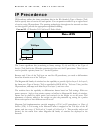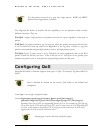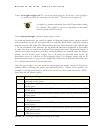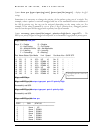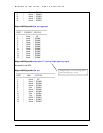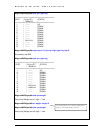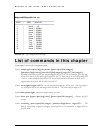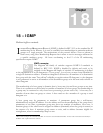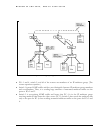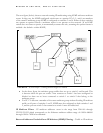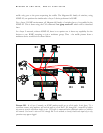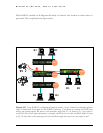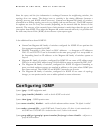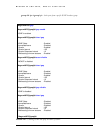
MAGNUM 6K SWITCHES, MNS-6K USER GUIDE
The creation of transient groups and the maintenance of group membership information is the
responsibility of "multicast agents", entities that reside in internet gateways or other special-
purpose hosts. There is at least one multicast agent directly attached to every IP network or sub-
network that supports IP multicasting. A host requests the creation of new groups, and joins or
leaves existing groups, by exchanging messages with a neighboring agent.
The Internet Group Management Protocol (IGMP) is an internal protocol of the Internet
Protocol (IP) suite. IP manages multicast traffic by using switches, multicast routers, and hosts
that support IGMP. A set of hosts, routers, and/or switches that send or receive multicast data
streams to or from the same source(s) is termed a multicast group, and all devices in the group use
the same multicast group address. The multicast group running version 2 of IGMP uses three
fundamental types of messages to communicate:
• Query: A message sent from the querier (multicast router or switch) asking for a response from
each host belonging to the multicast group. If a multicast router supporting IGMP is not present,
then the switch must assume this function in order to elicit group membership information from
the hosts on the network. (If you need to disable the querier feature, you can do so through the
CLI, using the IGMP configuration MIB. See “Changing the Querier Configuration Setting” on
page “Configuring the Querier Function”)
• Report: A message sent by a host to the querier to indicate that the host wants to be or is a
member of a given group indicated in the report message.
• Leave Group: A message sent by a host to the querier to indicate that the host has ceased to be a
member of a specific multicast group. Thus, IGMP identifies members of a multicast group
(within a subnet) and allows IGMP-configured hosts (and routers) to join or leave multicast groups.
When IGMP is enabled on the Magnum 6K family of switches, it examines the IGMP packets it
receives:
• To learn which of its ports are linked to IGMP hosts and multicast routers/queriers belonging
to any multicast group.
• To become a querier if a multicast router/querier is not discovered on the network.
Once the switch learns the port location of the hosts belonging to any particular multicast group,
it can direct group traffic to only those ports, resulting in bandwidth savings on ports where
group members do not reside. The following example illustrates this operation.
The figure below shows a network running IGMP.
215



